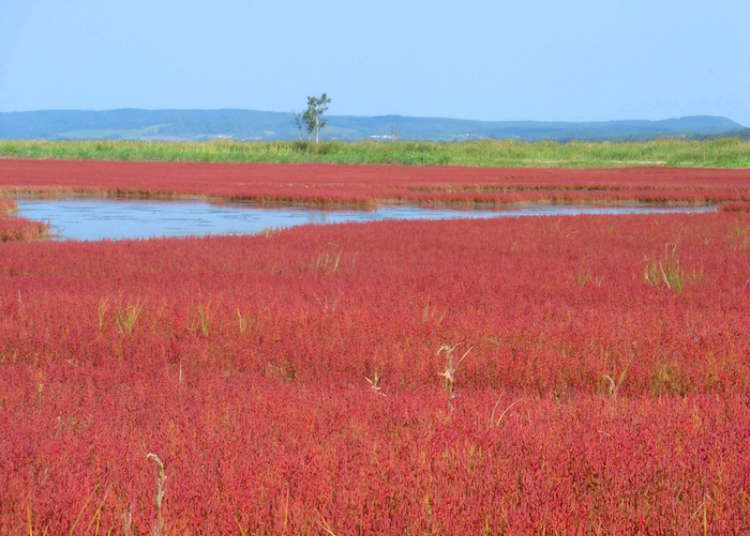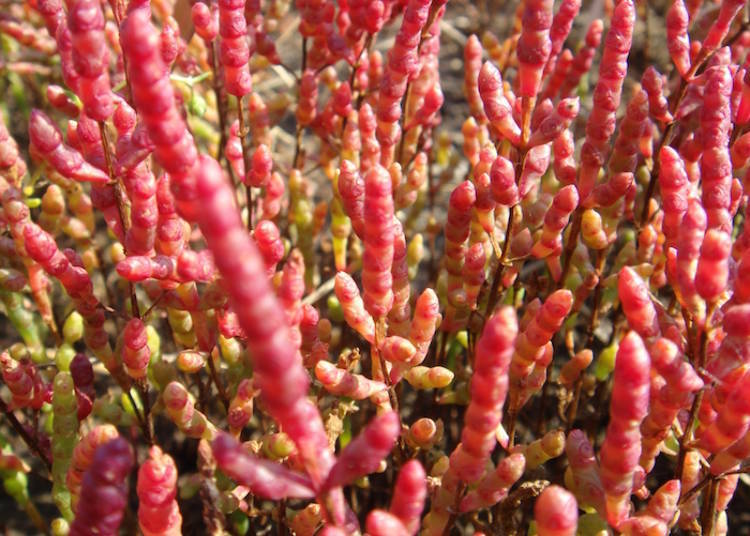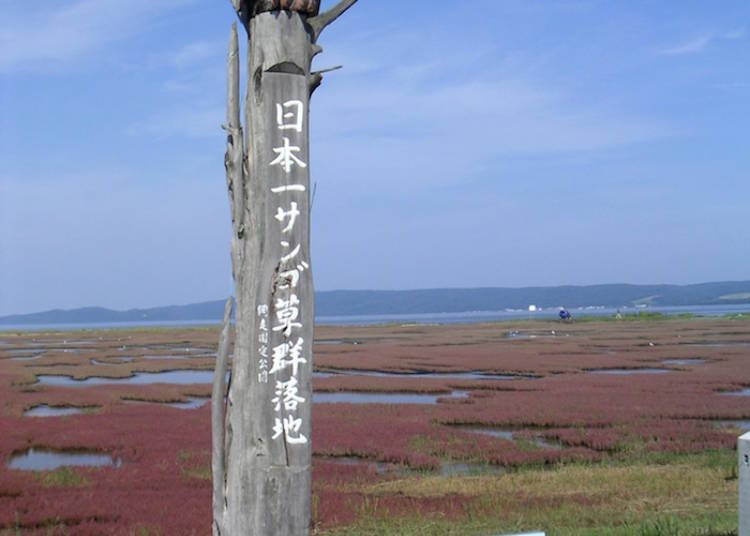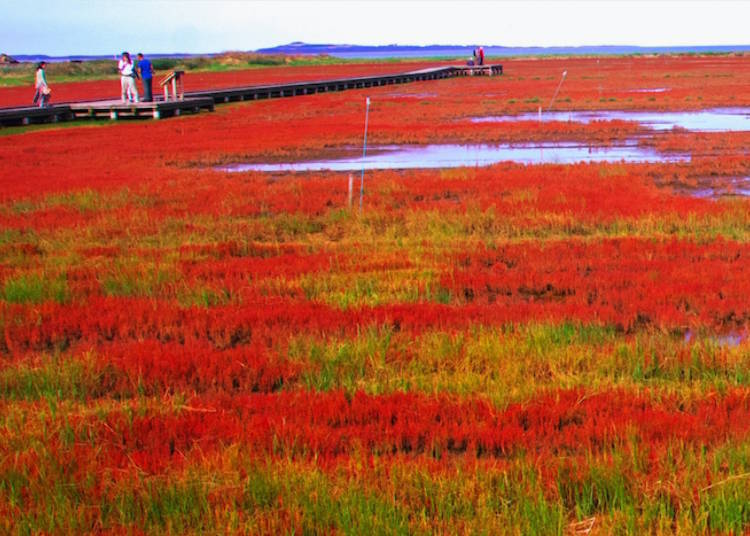
The changing leaves of autumn are one of Japan's most distinguishable markers of their four seasons, but is there something that goes even beyond the traditional foliage-viewing spots such as mountains and forests?
There is, and it's called 'coral grass,' a vividly-tinted, red field of grass that stretches into a beautiful expanse under the blue autumn sky comparable to a carpet of crimson. Here we'll introduce you to four towns in Japan with this gorgeous red grass.
Coral Grass: East Hokkaido's Fall Feature
Coral grass is an annual plant that grows to a height of about 15-30 centimeters. It's official name is Akkeshisou in Japanese (common glasswort in English). It was given its Japanese name because it was discovered around Lake Akkeshi, Kakijima Island, located in the eastern Pacific coastal town of Akkeshi.
When autumn comes around, the fleshy stalks branch out from the nodes and turn red, giving the grass an appearance similar to a coral reef, hence the nickname 'coral grass.'

Coral grass thrives in salty environments such as wetlands that receive plenty of seawater from the incoming tides. Along the Sea of Okhotsk coast of Hokkaido lie many lakes that formed as remnants of the separated seas, and are home to plenty of coral grasses. The prime viewing time may vary depending on location and time of the year, but falls within the range of late August to early October.
Lake Notoro: Japan's Finest Coral Grass

Lake Notoro in Abashiri City is said to house the largest expanse of coral grass in Japan. It is about 20 minutes by car or bus west of Abashiri Station, and can be accessed via Routes 39 and 238.
Though once facing endangerment of shrinkage due to the drying up of the wetlands, thanks to serious environmental protection efforts, this vast land now stretches out to about 3.8 hectares of land, creating a beautifully dyed red carpet that attracts tons of tourists and visitors mid-September every year.

Because the coral grass is so highly protected, you cannot walk directly into it. Instead, there is a wooden pathway that cuts through the center of the fields that you can walk on. The color of the sky is reflected on the surface of the water, creating a stunning contrasted view that you can enjoy on clear days.
Ubaranai SANGO Grassland
Abashiri, Hokkaido
Map Code: 525 359 376*33
Hokkaido Heritage Site Wakka Primeval Flower Garden

Straddling the cities of Kitami, Yubetsu, and Saroma lies Saroma Lake, the largest brackish lake in Japan. The Wakka Primeval Flower Garden is located on the sandbar between the Sea of Okhotsk and Lake Saroma, which lies in the town of Tokoro, Kitami City on the northeast bank of…

